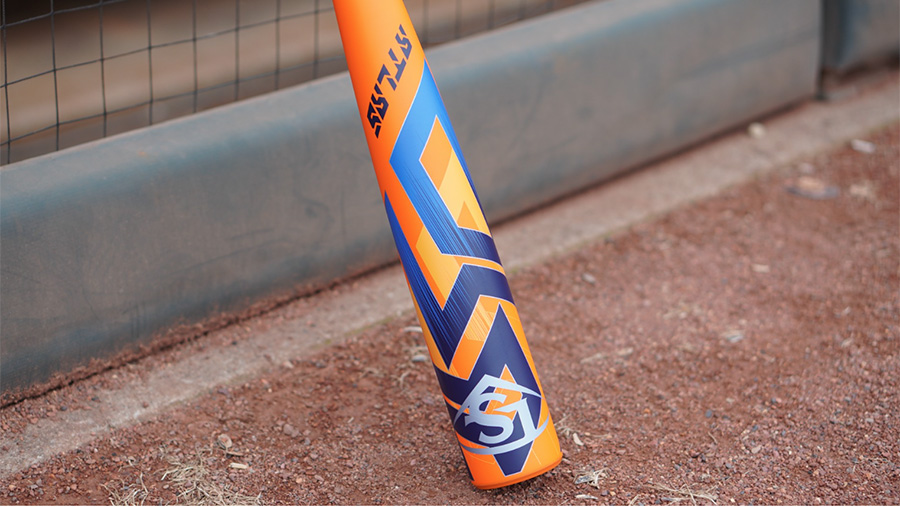
The 2025 Atlas Supernova Bat: A Technological Marvel or a Marketing Gimmick?
The year is 2025. The baseball world is abuzz with anticipation. Not for a new season, not for a new star player, but for a new bat: the Atlas Supernova. This isn’t just any bat; it’s a technological marvel, boasting revolutionary features that promise to redefine the game. But as with any groundbreaking innovation, skepticism abounds. Is the Atlas Supernova a legitimate game-changer, or just another marketing ploy aimed at capturing the attention of fans and players alike?
The Hype: A Bat Built for Power and Precision
The Atlas Supernova, a brainchild of the enigmatic tech company Atlas Innovations, is marketed as the culmination of years of research and development. It’s not just a bat, it’s a "performance enhancer," utilizing cutting-edge materials and design to unlock unprecedented power and precision at the plate.
The Key Features:
- Aerodynamic Design: The bat’s unique, aerodynamic shape, inspired by aerospace engineering, reduces air resistance during swing, allowing for faster bat speeds and greater power.
- Ultra-Lightweight Construction: Crafted from a proprietary blend of carbon fiber and titanium, the Supernova is incredibly lightweight yet incredibly strong, maximizing swing speed and minimizing fatigue.
- Integrated Sensor Technology: Embedded sensors monitor swing mechanics, providing real-time feedback to the batter through a connected app. This data can be used to optimize swing path, improve bat control, and ultimately enhance performance.
- Variable Weight System: The bat features an adjustable weight system, allowing players to customize the bat’s weight distribution to suit their individual swing styles and preferences.
- Enhanced Sweet Spot: The Supernova’s sweet spot is significantly larger than traditional bats, offering a greater margin of error and maximizing the potential for powerful hits.
The Skeptics: Doubts and Concerns
While the Atlas Supernova promises a revolution in baseball, its innovative features have also sparked skepticism and concerns among players, coaches, and even league officials.
- Fairness and Competitive Advantage: Critics argue that the bat’s advanced technology gives players an unfair advantage, potentially disrupting the balance of the game. The ability to customize weight and receive real-time feedback could create an uneven playing field, favoring players who can afford and adapt to the technology.
- Safety Concerns: Some express concerns about the impact of the bat’s increased power on pitchers and fielders. The possibility of faster, more powerful hits could lead to an increase in injuries.
- The "Unnatural" Advantage: Many believe that the Supernova represents a departure from the traditional essence of baseball, which relies on skill, talent, and physical prowess. The bat’s technology, critics argue, could diminish the importance of these core elements.
- Technological Dependency: The reliance on sensor technology and app-based feedback raises concerns about players becoming overly reliant on external tools, potentially hindering their natural instincts and decision-making abilities.
- Cost and Accessibility: The Supernova’s advanced technology is expected to come at a premium price, potentially making it inaccessible to many players, especially those from lower socioeconomic backgrounds. This could exacerbate existing inequalities in the sport.
The Debate: A Matter of Perspective
The debate surrounding the Atlas Supernova is a microcosm of a larger conversation about technology’s role in sports. Some see the Supernova as a natural progression, a tool that can enhance performance and push the boundaries of human potential. Others view it as an unwelcome intrusion, threatening the integrity and spirit of the game.
Arguments for the Supernova:
- Performance Enhancement: The bat’s technological features can help players reach their full potential, enabling them to hit harder and more consistently. This can lead to more exciting games and a higher level of play overall.
- Data-Driven Insights: The sensor technology provides valuable data that can be used to improve training, optimize swing mechanics, and reduce the risk of injuries. This can benefit players at all levels.
- Innovation and Progress: The Supernova represents a significant technological advancement in the sport, pushing the boundaries of what’s possible and driving innovation in equipment design.
Arguments Against the Supernova:
- Unfair Advantage: The bat’s advanced technology could give players an unfair advantage over those who don’t have access to it, potentially disrupting the balance of the game.
- Loss of Tradition: The Supernova represents a departure from the traditional essence of baseball, which relies on skill, talent, and physical prowess. This could diminish the importance of these core elements.
- Potential for Abuse: The bat’s technology could be abused, potentially leading to an increase in injuries and a decline in the quality of play.
The Future of the Atlas Supernova:
The fate of the Atlas Supernova remains uncertain. While the bat has garnered significant attention and hype, it faces significant opposition from those who fear its potential impact on the game. The debate will likely continue as the Supernova undergoes testing and evaluation, with league officials, players, and fans weighing its potential benefits against its potential drawbacks.
Ultimately, the success of the Atlas Supernova will depend on its ability to strike a balance between innovation and tradition, performance enhancement and fairness. If it can prove itself to be a legitimate tool for improving the game without compromising its core values, the Supernova could usher in a new era of baseball, one where technology and tradition coexist in harmony. However, if it falls short of these expectations, it may become just another forgotten fad, a cautionary tale about the potential pitfalls of unchecked technological advancement in sports.
Beyond the Bat: The Broader Implications
The debate surrounding the Atlas Supernova extends far beyond the confines of the baseball diamond. It reflects a broader societal conversation about the role of technology in sports, and its potential impact on the future of athletic competition.
- The Ethical Dilemma: As technology continues to advance, sports organizations are faced with an ethical dilemma: how to balance the pursuit of performance enhancement with the preservation of the integrity and spirit of the game.
- The Future of Sports: The rise of technology in sports is likely to continue, leading to further innovations in equipment, training methods, and even the very way we play and watch sports. This raises questions about the future of athletic competition and the role of human skill and talent in a world of increasingly sophisticated technology.
- The Importance of Regulation: As new technologies emerge, it’s crucial for sports organizations to develop clear regulations and guidelines to ensure fair play, safety, and the preservation of the game’s core values.
The Atlas Supernova, with its revolutionary features and controversial implications, is a stark reminder of the complex relationship between technology and sports. It’s a relationship that will continue to evolve, demanding thoughtful consideration, open dialogue, and a commitment to ensuring that the pursuit of innovation doesn’t come at the expense of the very essence of the games we love.






